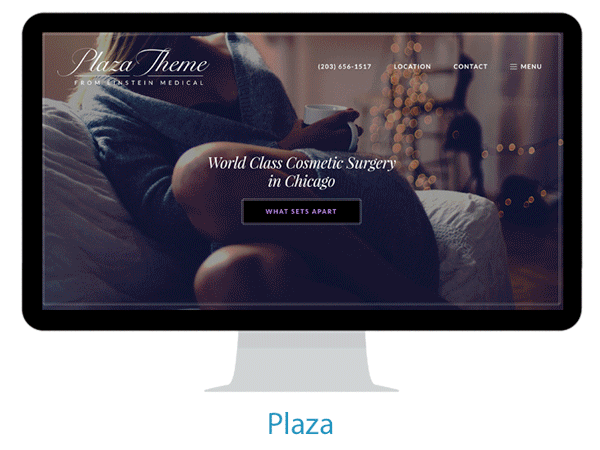Beauty & Brains in Website Design: More Than a Pretty Face
People are psychologically hardwired to trust beautiful people, and the same goes for websites. Our offline behaviour and inclinations translate to our online existence. — Dr. Brent Coker, University of Melbourne study on online consumer behavior
Fair or not, people are hardwired to trust beautiful people. The same holds true when it comes to your website, your face to the world.
But unlike a stunning portrait hanging in an art gallery, a website has to be more than just a pretty face.
To be discovered and delight, your website needs to offer an optimum experience in both form and function to build trust in you and your services.
A website that is unattractive, clunky, and confusing undercuts your perceived value.
The biggest source of frustration is the inability to find relevant information on a website. The best way to stop defection to other websites, and increase loyalty, is to be interesting.
Being pretty, but with nothing to say, is not enough. — Dr. Brent Coker, University of Melbourne study on online consumer behavior.
Judgments about your website are made in the blink of an eye. It takes just fifty milliseconds for people to start making conscious and subconscious judgments about your credibility and trustworthiness based on your website's design.
Is your site:
-
Visually cluttered? That causes confusion, making your message harder to understand and people more likely to leave.
-
Slow to load? Impatient, people will pogo stick to a site where they don't have to wait.
-
Hard to navigate? Navigation should be intuitive. In addition to overcoming the cognitive issues of figuring out where to go, a website must also address the physical obstacles. Consider the challenges on mobile phones where the finger is the new mouse. Small buttons and fat-finger typing could be your undoing.
Now more than ever good design requires both beauty and brains.
The Hallmarks of Good Design
Good design caters to the user, and here's where simplicity triumphs. A simple, clean design reduces the cognitive load — the mental effort — required to understand how to use a website or what it's trying to say.

Everything should be made as simple as possible, but not simpler.
— Albert Einstein
The more mental effort required to use a website, the more likely people will be confused, miss important information, or just leave.
Just as your computer slows down when too many programs are open, so does the human brain. Inundated with too much information or a confusing format, people become overwhelmed. Then, when they max out, they leave.
Responsive Website Designs
Examples for Plastic Surgery, Dentistry, Fertility, Ophthalmology
- Hurwitz Center for Plastic Surgery
- Teplick Custom Vision
- Park City Oral Surgery
- Houston Fertility Center
- Macy Eye Center
- Silvers Family Dental Care
- San Antonio Plastic Surgery Center
Well-designed websites reduce the cognitive load by giving people the information they need — but not until they need it.
The trick is discovering the right mix of form and function that resonates with your audience. Unlike people looking for a movie or a pizza, people looking for health care struggle to find a balance between their right-brain and left-brain: A right-brain pursuit of wished-for results and a left-brain quest for facts that will reassure them.
To fulfill these dual needs, you need to understand your audience's mindset as well as their online behavior.
-
Where are the tipping points on a website? Which pages drive patients away and which ones encourage them to fill out a contact form?
-
What pages are the most popular with prospective patients? How can navigation make those pages easier to find?
You can't rely just on logic for the answers to these questions because, frankly, people aren't always logical.
They fail to make optimal choices on websites because they are prone to "satisficing," opting for choices or judgments that are "'good enough." Sometimes those choices are simply blind guesses because the mental effort required to understand a confusing website has exhausted their patience. At other times they just choose to leave.
So if logic isn't the Holy Grail of web design, then what is? Data.
Data-Driven Design
When people say one thing and do another, then data is where the truth lies. With more than 20 years of data on health care websites, Einstein Medical draws on a wealth of knowledge — not just hunches — to design websites with both beauty and brains.
We've captured millions of interactions that reveal how prospective patients look for information, navigate websites, and make the leap from visitor to patient. The process has allowed us to introduce a new class of data-driven designs that blend form and function, catering to the dual need for websites to please both search engines and people alike.
Because of the volume of data we have, we are uniquely positioned to draw statistically significant conclusions about the best ways to convince more patients to contact our clients' practices. Then we act on those conclusions, designing not just for looks, but for success.
Traits of Good Design:
-
Less is more. Studies show that users prefer websites with lower visual complexity. A simple design allows you to focus visitors’ attention right where you want it. On the message. Because our data shows that 50% of all pageviews are for four specific pages or sections of a site, we've simplified navigation to ensure the most popular items stand out.
-
Embrace white space. Don't fill every nook and cranny with "stuff." White space allows you to direct a viewer's attention. White space also imparts an expansive feeling, which equates with quality. There's a reason advertising for luxury products takes this minimalist approach.
-
Create a visual hierarchy. Users don't read, they scan the page looking for a likely landing spot. By using color, typography, or imagery you can help them on their journey with visual clues that guide them to their goal. Visual hierarchy makes the next step obvious. No thinking required.
-
Make it a Lamborghini. Make it fast. In the online world, statistics show that speed wins. Web users insist on instant gratification, even when they are hamstrung by limited bandwidth on a mobile phone. Speed is also a boon when it comes to pleasing Google, which uses website speed as a ranking factor.
-
Play by the rules. Websites should be original, but at the same time conventional. This is no time to force your visitors into a game of "Where's Waldo?" The standard parts of a website, such as logos and navigation, should be placed where people expect to find them. Otherwise, you simply frustrate visitors. Imagine reading a magazine that flouted convention and put the table of contents in the back.
-
Easy to navigate. Visitors should intuitively understand the structure of your website and where to find information. On mobile, buttons and links should be large enough and spaced so users can avoid fat-finger typing mistakes.
-
Beautiful at any size. As your brand ambassador, your website needs to look good on mobile, tablet, and desktop. Research shows that people make judgments about staying or leaving within milliseconds of arriving on a website.
Designing for Success
In today's multi-device world, design has more hurdles than ever to overcome. As consumers jump from mobile to laptop, design has to keep pace.
Don't be lulled into complacency by assuming the journey for important decisions like health care happens only on desktops.
-
Today's consumer takes advantage of micro-moments, fragmenting research into a multi-step process on multiple devices. Even though the odds are they will eventually gravitate to a laptop for in-depth research, you still want to introduce yourself early in the journey, which statistics show most likely will be on a mobile device.
-
Even brief visits from a mobile device should not be discounted because first impressions are lasting ones. Each micro-moment is an opportunity to shape a prospective patient's journey. If you think mobile doesn't matter then you could be missing out on the longer pre-journey that builds trust and credibility in your practice.
-
Be present at all stages of the journey to improve your chances of landing on a potential patient's short list of practices that they will call for a consultation.
In our tech-tethered society, you won't know when a micro-moment will happen. And you don't know where. But if your website embraces both beauty and brains, you'll be putting your best foot forward whenever, wherever it happens.





